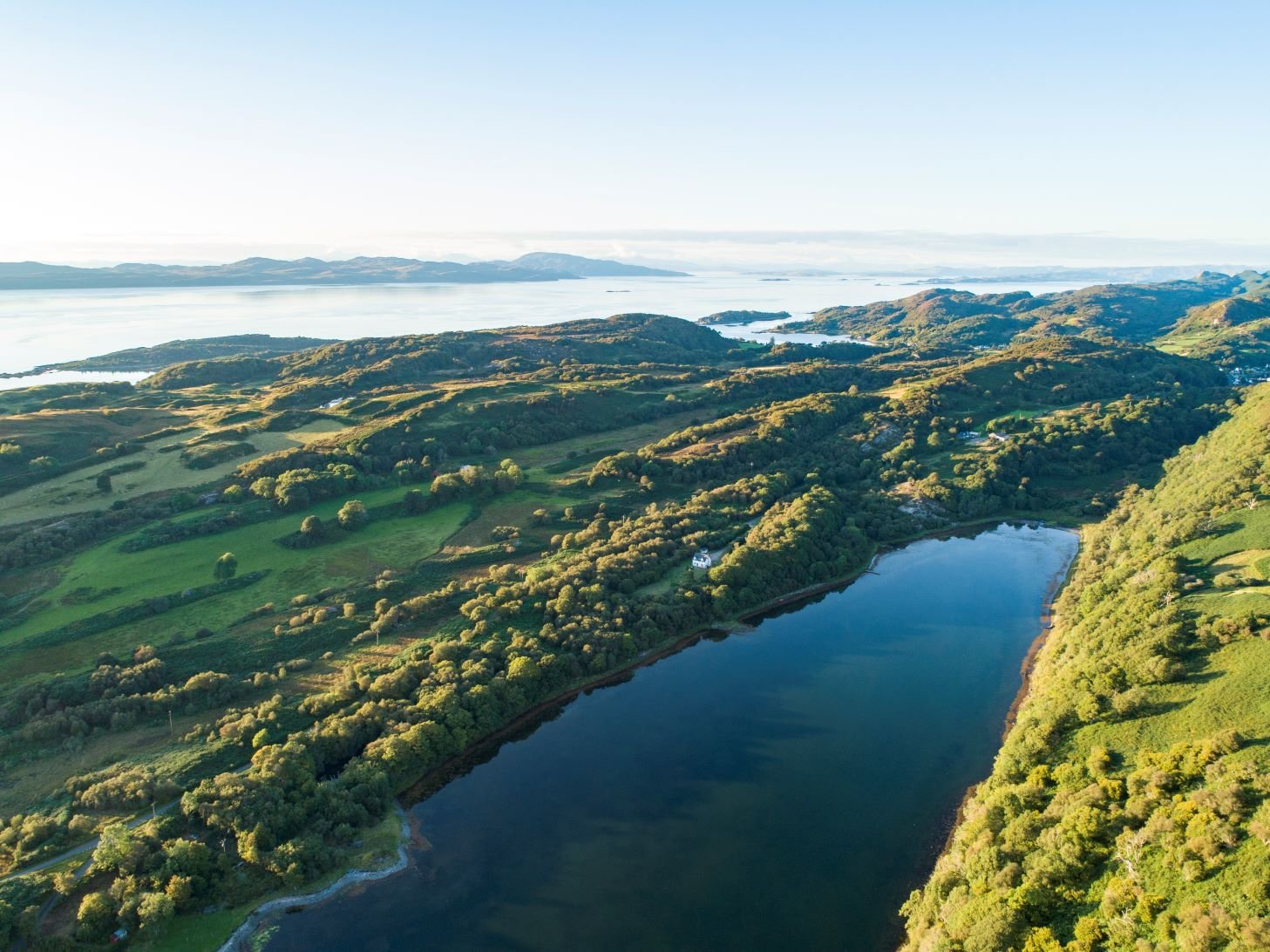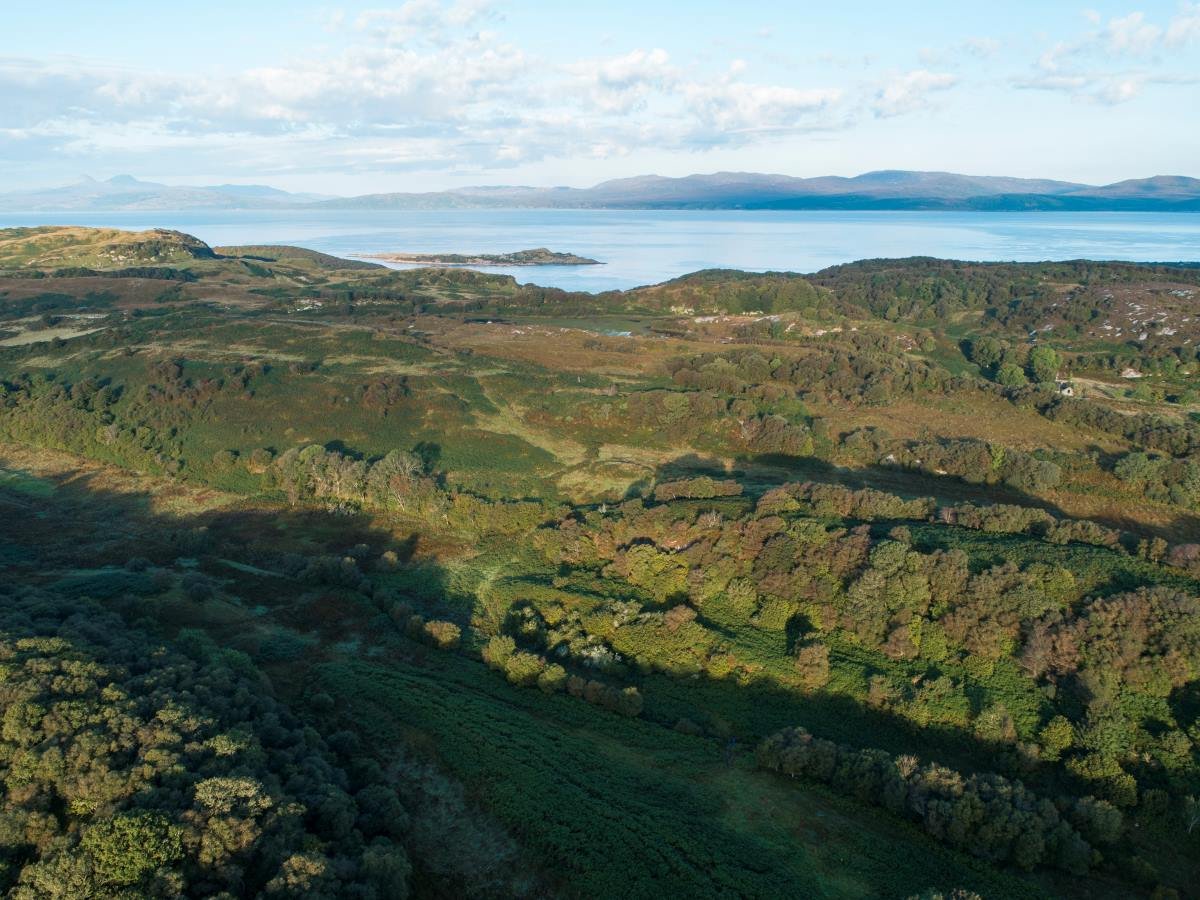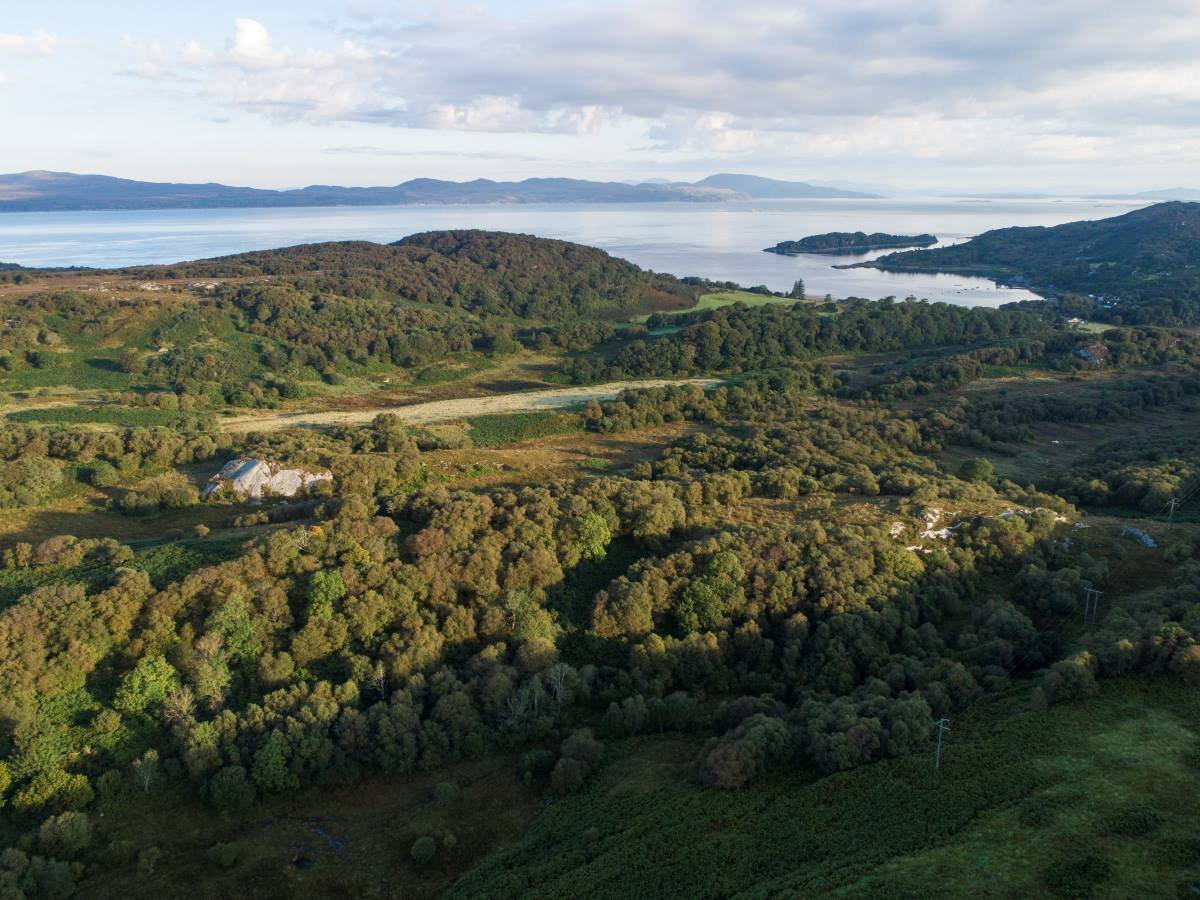Restoring the Temperate Rainforests of Tayvallich
Our purchase of Tayvallich estate includes patches of ancient Temperate Atlantic Rainforest. Restoring these forests will be one of our most important priorities, write co-Chief Scientists Calum Brown and Penelope Whitehorn.
Rainforests have a special allure for many of us. Their incredibly high-levels of biodiversity are fascinating, and becoming more and more important as we lose species around the world.
It comes as a surprise to some that rainforests are not just hot, jungly places in the tropics – they can also be cool (but always wet!). Scotland has many of the best locations in Europe for these so-called temperate rainforests, thanks to the clean air and continual damp of our coasts. More than 500 species of lichens, mosses, liverworts and ferns thrive here, and many of these are found nowhere else. These species give temperate rainforests their rather magical and ancient feel – the forest floor is carpeted in thick mosses in every shade of green, and lichens drip from the trees.
Fragments of Temperate Atlantic Rainforest at Tayvallich
But the extent of rainforest in Scotland has plummeted over time. They now cover only around 30,000 hectares – a similar area to Edinburgh – fragmented into numerous small patches. These patches are often in poor condition, and many won’t be able to withstand further pressures from climate change and unsuitable land management.
Highlands Rewilding is incredibly lucky that there are fragments of Temperate Atlantic Rainforest on Tayvallich estate. Restoring, connecting and monitoring these habitats will be some of our main priorities, working with the local community and our partners in ecological consultancies and universities.
One of the first steps we’ll need to take is to reduce browsing by deer. Initial ecological surveys suggest that the forests are over-grazed, with little natural regeneration and declining forest condition as a result. (Some grazing by livestock and wildlife will still occur, and will help to maintain the diverse forest structure that is so important for many species). But once regeneration starts to be successful, we have a wonderful chance to step back and watch the forests recovering.
Tayvallich includes ancient woodlands made up of birch, oak, hazel and juniper, many of which are designated Sites of Special Scientific Interest. Their presence means that the seed sources, species and conditions are all in place for restoration to occur without mass planting or other large interventions. And the presence of healthy rainforest in the neighbouring Taynish National Nature Reserve means that these recovering areas can be connected up to form a functioning ecosystem at a scale that is becoming ever more scarce.
Within these forests, we can look forward to highly biodiverse habitats developing. Tayvallich’s ancient woodlands already have many characteristic plant species including wood sanicle, dog’s mercury, and enchanter’s nightshade. Taynish supports wood warblers, redstarts, red squirrels and pine martens, with marsh fritillaries in the wet areas outside the woods. 193 oceanic bryophytes are found in the Tayvallich Juniper and Fen SSSI, including the endemic Fissidens celticus, and hundreds of other bryophytes and lichens could occur in these forests. We have some experience of these from our internationally significant lichen populations at Bunloit, which grow in deep gorges that hold moisture so well that they contain rainforest communities. We’ll be carefully monitoring these species as we work, continuing our relationship with experts at Plantlife and using information from the Alliance for Scotland’s Rainforest, amongst others.
Deep gorges at Bunloit, which hold moisture so well that they contain rainforest communities
This is one of several important new areas for our natural capital science, and we’ll be working hard not only to restore these habitats but also to make sure that changes – in all their complexity - are properly measured. As one of Scotland’s most important ecosystems, we want to make sure that we learn everything we can about temperate rainforests and their biodiversity as we try to limit the impacts of a changing climate.
We will be doing this alongside local people who know and manage the land already (this collaboration will extend across all of Tayvallich’s habitats, from grasslands to wetlands, forests and shorelines). Like the rainforests themselves, we can build on local knowledge of these ecosystems that might otherwise be gradually lost, and ensure that these emblematic habitats are recovering because of the people who live and work around them.
Co-Chief Scientists Penelope Whitehorn and Calum Brown










